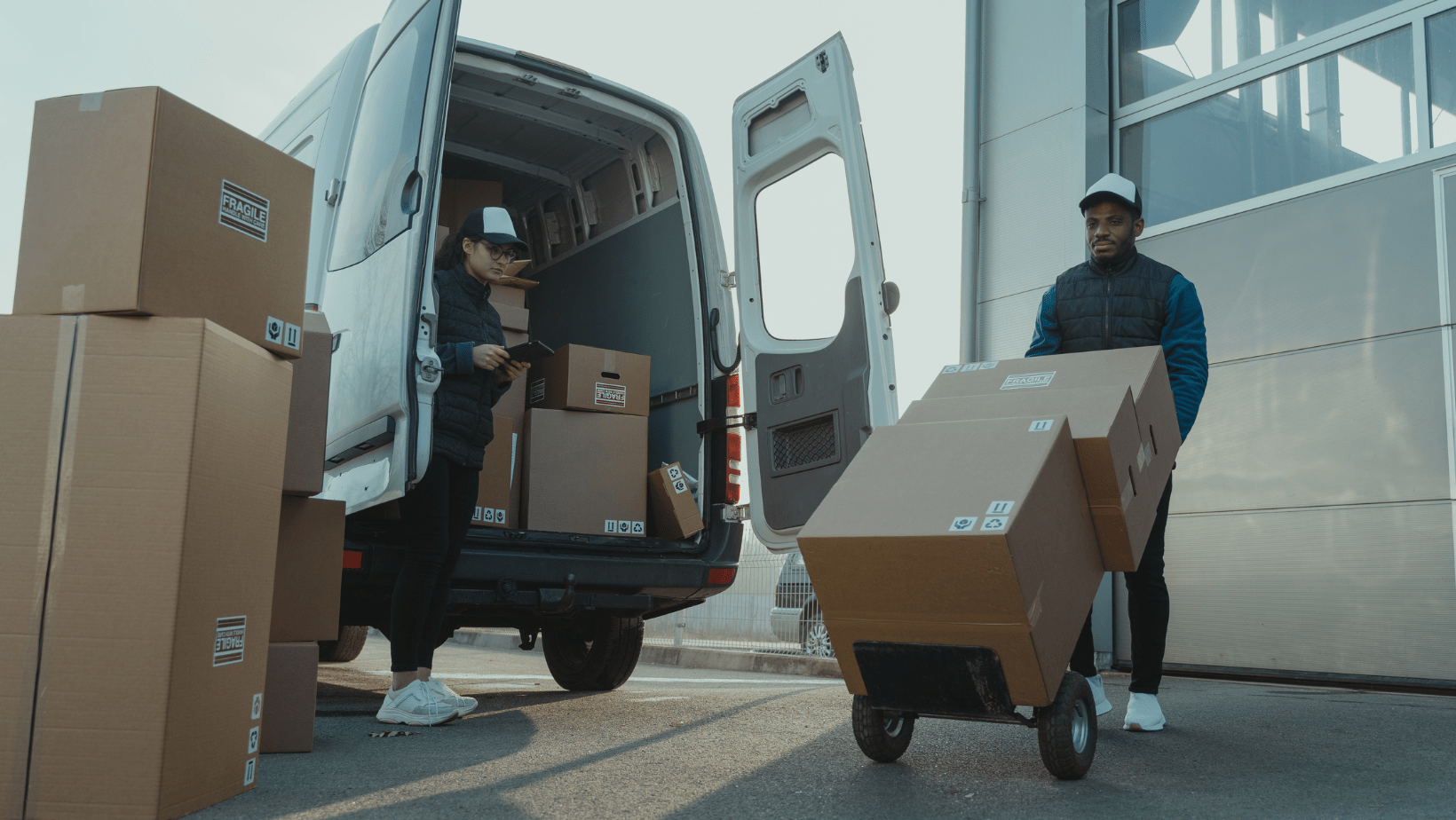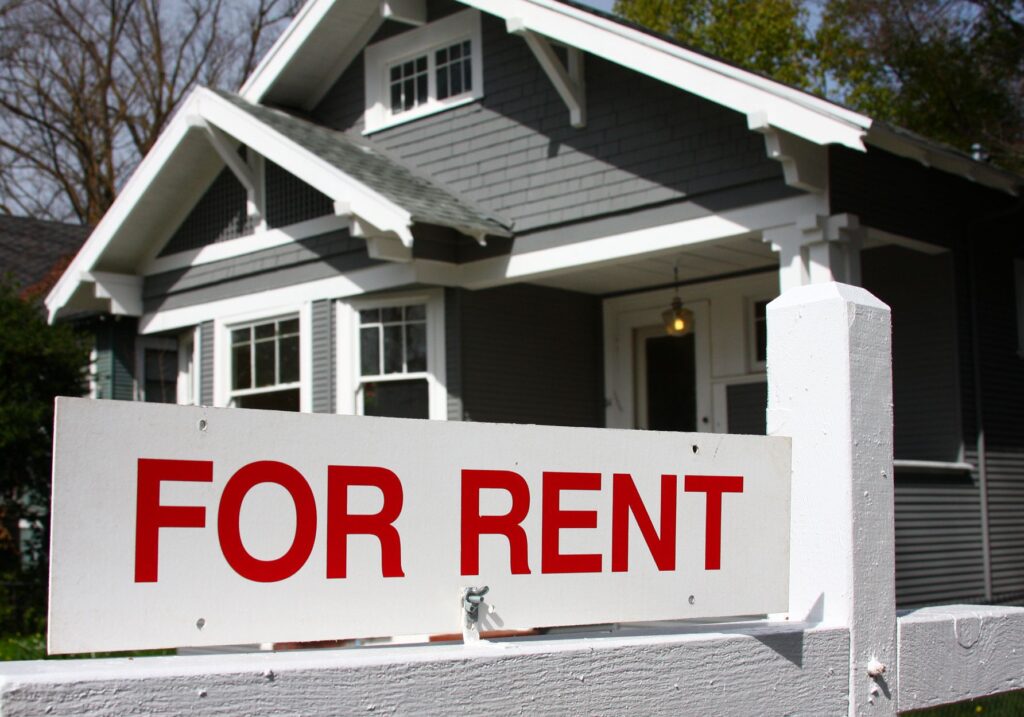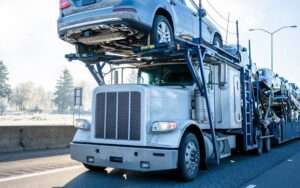Navigating the Logistics of Interstate Move
March 5, 2024
Moving to a new home in a different state can be an exciting but challenging process. There are many logistical details involved in coordinating an interstate move that require careful planning and preparation. This guide will provide an overview of the key steps involved in navigating the logistics of an interstate move, from deciding what to take with you to changing your address once you arrive at your new home.
Moving between states brings added complexity compared to an intrastate move. You’ll need to coordinate timing with movers traveling a longer distance, be prepared for extra paperwork and regulations when crossing state lines, and account for potential delays and other challenges inherent to longer moves. With smart planning and organization, you can ensure your interstate move goes as smoothly as possible.
In this guide, we’ll cover choosing a moving company, creating a timeline, preparing your items for transport, understanding regulations and insurance, tracking your shipment, and unpacking and getting settled in your new home. By knowing what to expect at each step of the process, you can avoid hassles and feel confident that your move will be successful. Whether you’re moving for a new job or other life change, our tips will help you navigate the logistics of your interstate move.
One of the first steps when preparing for an interstate move is deciding what to take with you and what to leave behind. This is a good opportunity to thoroughly evaluate your belongings and pare down your possessions.
Take stock of everything you own and sort items into categories:
As you assess your belongings, consider the following:
Aim to be selective and move only essential, useful items. If you haven’t used something in over a year, it may not be worth moving.
For items you plan to donate or sell, look for local charities, thrift stores, consignment shops, or online platforms. This can benefit those in need and earn you extra income.
Anything broken, worn out, or useless should be discarded and recycled if possible. Go through every room, closet, drawer, and storage area. The less you move, the easier and more affordable your move will be.
The moving process also presents a great opportunity to reset and start fresh. Don’t feel obligated to move items out of habit or sentiment if they no longer fit your lifestyle.
When preparing for an interstate move, one of the biggest decisions is whether to hire professional movers or do it yourself. There are pros and cons to each approach.
Professional Movers
Hiring professional movers takes much of the stress and heavy lifting out of moving. Reputable companies will have trained staff, insurance coverage, and the right equipment to safely transport your belongings long distances. This option costs more but may be worth it for the convenience and peace of mind.
DIY Moving
For more budget-conscious individuals, you may opt to do it yourself. This takes considerable time and effort but costs less. You must rent a truck, pay for insurance, gas, tolls, and hotel stays. Lifting heavy furniture and driving long distances can also be challenging.
Carefully weigh the tradeoffs of professional vs DIY moving to decide what best suits your relocation needs and budget.
The timeline for an interstate move often begins 4-8 weeks before your moving dates. This provides enough time to prepare, sell items, pack, schedule movers, and handle any last minute details.
When scheduling your interstate move, consider the following timeline:
Securing your moving dates as early as possible ensures availability as movers book up quickly in peak season. Give yourself enough time to prepare methodically, without last-minute stresses. Advance planning helps make moving interstate smooth and efficient.
The key to ensuring a smooth move is proper packing and preparation. Start by decluttering and getting rid of items you no longer need or want. This will reduce the amount you have to pack and move.
When packing, use sturdy boxes in good condition and fill them to the top. If they collapse, repack with more items. Seal boxes tightly with packing tape. Label each box clearly with the contents and the room it should go in at your new home. This will help movers know where to put each one.
Use specialty boxes for mattresses, wardrobe boxes for hanging clothes, and disassemble furniture to move it more easily.
Wrap fragile items individually in bubble wrap or paper. Use dish packs and extra padding for plates, glasses, and valuables.
Pack a travel bag with medications, valuables, and other essentials to take with you rather than having movers transport it.
Create a detailed moving inventory with all items you’ll be moving. Note condition, value, and box number. Take photos of expensive items before packing. Update your inventory as you finish packing each room.
Keep all moving documents together in a file folder. This includes the moving inventory, receipts, bill of lading, and tracking numbers.
Proper preparation and diligent packing will give you greater peace of mind on moving day.
One of the biggest logistical considerations when moving interstate is how you’ll transport your belongings and where you’ll store them if needed. You have several options to weigh:
Renting a moving truck and driving it yourself is often the most flexible and affordable option. U-Haul, Penske, Budget, and other rental companies let you pick up a truck locally and drop it off at your destination. Consider the size you’ll need based on your possessions. Factor in fuel costs for the drive. And keep in mind that driving a loaded moving truck is very different from a regular vehicle!
Renting a moving truck can provide convenience and cost savings compared to hiring professional movers. However, driving a large rental truck also comes with risks. Without proper insurance, you could be liable for damages that occur during the rental period. That’s why it’s crucial to understand your moving truck insurance options when renting a moving truck.
Moving truck rental companies are required to provide minimum liability insurance, but this basic coverage has limits and exclusions. It likely won’t fully protect you if the truck is damaged or involved in an accident. Additional insurance options are available to reduce your financial risks.
Purchasing adequate moving truck insurance provides peace of mind that your possessions and finances are protected. It covers expenses if the truck is stolen, damaged, or involved in a collision. With the right insurance, you can avoid owing thousands of dollars in repair or replacement costs.
This guide will explain the factors that determine insurance rates, outline key coverage choices, and help you make smart decisions when renting and insuring a moving truck. Understanding your options will enable you to move with confidence.
Moving insurance can protect you against injury claims, damage to the truck or cargo, or loss or damage to household items during the move. Generally there are three main types of coverage:
This covers bodily injury and property damage if you are at fault in an accident. It protects you from the expense of defending a lawsuit and legal judgments. Liability insurance is required by rental truck companies. The minimums are typically $750,000 for any accident but can go up to $1 million or more. This covers the truck but not your personal belongings inside.
Collision covers damage to the rental truck if you are in an accident, regardless of fault. Comprehensive covers the truck for damages from theft, vandalism, fire, or acts of nature like hail or floods. There is usually a deductible, typically $500 to $1,500. Some credit cards provide rental car collision coverage if you use that card to pay.
This covers loss or damage to your household belongings while in the rental truck – furniture, clothing, electronics, etc. It may be sold by the rental company or moving company. Make sure the limits adequately cover the value of your items. Standard policies often limit categories like jewelry or electronics. Higher value items may need extra insurance.
The cost of moving truck insurance can vary widely depending on several key factors:
Carefully consider these major factors when obtaining moving truck insurance quotes. Understanding how they impact overall costs will help you select adequate coverage at the best available rate for your upcoming move.
The best way to get quotes for moving truck insurance is directly from the rental companies. When reserving a truck, the rental company will ask if you want to purchase additional insurance. This is the easiest way to get a quote specific to your rental.
You can also get quotes from third party insurance companies. Companies allow you to enter details about your move to get quotes from multiple insurers at once. This allows you to compare your options side-by-side.
Some key details to have on hand when getting quotes:
Getting multiple quotes is recommended, as prices can vary between insurers. Make sure to understand what is covered under each policy. Rental companies and third parties may offer different levels of protection.
Review all policy details carefully before choosing an option. Look for any limitations, exclusions or deductibles that could leave you underinsured. Getting quotes in advance ensures you have time to make an informed decision.
Renting a truck from a rental company often comes with basic liability insurance included. However, this basic insurance may not provide enough coverage. Many experts recommend purchasing additional third party insurance for extra protection.
Third party insurance offers a few key advantages compared to relying solely on the rental company’s included basic insurance:
The main downside of third party insurance is the added expense. You’ll need to pay an additional premium upfront. However, experts say this extra cost is often worthwhile for the enhanced protection.
Before deciding, compare the rental company’s basic included insurance to third party options. Review the coverage levels and deductibles to determine if a third party policy is right for your rental truck needs. The extra peace of mind may be worth the additional premium.
The process for filing an insurance claim for a moving truck is straightforward, but there are some key steps to follow:
A smartbox is a portable moving and storage container that allows you to easily pack, transport, and store your belongings. Smartboxes, also known as portable storage containers or pods, have become an increasingly popular alternative to traditional moving and storage methods.
The concept of smartboxes first emerged in the late 1990s as an easier and more flexible way to move and store household goods and furniture. Companies like U-Pack, PODS, and U-Box introduced these portable containers that could be conveniently loaded, transported, and stored at self-storage facilities.
Smartboxes offer several key benefits over traditional moving and storage:
Today, smartboxes have become a go-to solution for residential and office moves where convenience, flexibility and security are top priorities. Major companies in the space like PODS and U-Pack have expanded across the U.S. and beyond. With the smartbox moving and storage model, relocating has never been easier.
Smartboxes are designed for easy moving and storage. They consist of durable plastic bins that stack and connect together into units. Here are some key features of how smartboxes work:
Smartbox Materials
Smartboxes are made of heavy-duty plastic to withstand the rigors of moving and storage. The plastic is thicker and more durable than normal plastic bins or cardboard boxes. Popular plastics used include polyethylene, polypropylene, and copolymer plastics. These resist cracking, warping, and breaking.
Stackable and Modular Design
Each individual smartbox is shaped so it can stack securely on top of another smartbox. The tops and bottoms interlock when stacked. The boxes can also be arranged side-by-side and connected together with clips or buckles. This allows for custom configurations.
Dimensions
Standard smartbox dimensions are 18″ x 18″ x 12″. This sizing allows them to be stacked on moving dollies and hand trucks. Some brands offer smartboxes in other dimensions like 24″ x 24″ x 12″ for larger and heavier items. The standard depth of 12 inches allows the boxes to fit through doorways during moving.
Lids
Smartbox lids are separate from the bottoms so the two stack flat when not in use. The detached lids help maximize storage space. Lids often have velcro, buckles or zippers to securely seal the contents inside.
Accessories
Many smartbox sets come with accessories like dollies, hand trucks, furniture sliders, and sidelines to help maneuver and secure the boxes. Rental sets include straps to keep the boxes tightly stacked during transport.
Weight Rating
Most smartboxes have a weight rating of 60-75 lbs. This allows them to safely contain heavier items than normal cardboard boxes during moving. The interlocking stackable design helps prevent damage or toppling of overweight boxes.
Moving to a new home or office can be an exciting but stressful time. Packing and transporting all of your belongings safely is a big task. This is where Smartboxes can make the process much easier. Here are some of the key benefits of using Smartboxes when moving:
Using Smartboxes for a move takes much of the difficulty and stress out of packing and transporting your possessions. Their innovative design leads to a more organized, efficient moving experience while keeping your items safe. Considering the benefits, Smartboxes are an excellent investment for any move.
Smartboxes offer an excellent storage solution for areas like closets, garages, attics, and basements. Their stackable and modular design makes them easy to organize and access, even in confined spaces.
Some key benefits of using smartboxes for storage include:
If you need to optimize and organize crowded storage spaces like garages, attics or basements, smartboxes offer an efficient and customizable solution. Their standardized sizing and stackable design is ideal for maximizing capacity while keeping contents neatly accessible.
Moving can be stressful, but using smartboxes can help make the process smoother. Here are some tips for moving efficiently with smartboxes:
Following these smartbox moving tips will make your move orderly and efficient. Take time to organize, label, and inventory your boxes so unpacking is hassle-free.
When it comes to loading and unloading Smartboxes, efficiency is key. Here are some tips to make the process go smoothly:
Following these loading and unloading best practices will keep the Smartboxes securely in place during transit and make transporting them much easier on move day. Work efficiently but safely, enlisting help to avoid injuries. With some strategic planning, you can minimize hassles when loading and unloading Smartboxes.
Moving can be a stressful and expensive endeavor. When it comes time to move your belongings from one home to another, you have two main options – using traditional cardboard boxes or reusable plastic smartboxes. There are pros and cons to each method that are important to consider.
Cardboard boxes are the most budget-friendly packing method. You can often get free boxes from grocery stores, buy inexpensive new boxes, or reuse old boxes you have around the house. The downside is that cardboard boxes are one-time use – once they are unpacked, the boxes are likely damaged and unusable for another move.
Smartboxes are more expensive upfront since they are made from durable plastic. However, their reuseability makes them cost-effective in the long run. Smartboxes can withstand dozens of moves if cared for properly. The initial investment pays off after just a couple of uses.
Cardboard boxes are easy to find, but can be tedious to assemble. Most cardboard boxes require folding and taping to construct before filling. They can rip or come apart if packed too heavy. Rain and moisture can easily damage cardboard boxes during a move.
Smartboxes snap together quickly without tape or tools. Their interlocking lids keep contents clean and secure. Built-in handles make smartboxes easy to lift even when fully loaded. Smartboxes are water-resistant and hold up well to outdoor loading in all weather conditions.
As mentioned above, cardboard boxes are single use. They wear out and get discarded after one move. This creates a lot of waste and expenses if you move frequently.
Smartboxes are designed for repeated long-term use. They typically last through 10+ moves before needing replacement. Some smartbox brands offer warranties against breakage or damage. The reusable nature makes smartboxes a more sustainable and cost-effective choice over time.
When deciding between cardboard or plastic moving boxes, weigh your budget, convenience, and environmental impact. Smartboxes may have higher initial cost, but save money and hassle with durability and reuseability for all your future relocation needs.
Smartboxes come in a variety of dimensions and weight capacities to suit different moving and storage needs. Here are some key factors to consider when selecting a smartbox:
Choosing the right sized smartbox with adequate weight capacity will ensure your belongings are properly protected and easy to transport. Consider the unique moving and storage requirements of your items. With so many smartbox sizes and styles available, you’re sure to find one that fits your needs.
When moving with Smartboxes, you have the choice to either rent or buy the boxes. Both options have their pros and cons to consider.
Renting Smartboxes can make more financial sense if you are only planning to use them for one move.
Renting avoids the upfront cost of purchasing new Smartboxes. It also means you don’t have to find space to store empty boxes after your move.
However, rental boxes may have signs of previous use like scuffs or tape residue. There is the risk of getting dirty boxes that weren’t properly cleaned after the last rental. Reputable companies sanitize boxes between uses, but there’s no guarantee.
Some rental companies charge cleaning fees if boxes are returned excessively dirty. These range from $1-$5 per box. Damage fees also apply if boxes are returned with major dents, breaks or missing parts.
Purchasing Smartboxes new can make sense if you plan to move multiple times or need boxes for long-term storage.
The major benefit is having clean boxes in the best condition. You also avoid rental delivery fees and cleaning/damage deposits.
Of course, you take on the storage space needed for boxes between moves. You’ll also have to handle cleaning and maintenance yourself. If you move infrequently, the upfront investment may not pay for itself.
Consider both options and your unique needs. For one local move, renting often wins for convenience. For multiple moves or long-term storage, buying new Smartboxes can provide more value in the long run.
The interstate moving industry has a surprisingly large carbon footprint. On average, a long-distance move emits over 3 tons of carbon into the atmosphere. This is equivalent to the emissions from driving a car 7,500 miles. With over 35 million Americans moving households each year, the environmental impact starts to add up quickly.
Reducing the carbon emissions of moving is becoming increasingly important. As climate change progresses, individuals and businesses alike are looking for ways to reduce their carbon footprints. The moving industry has lagged behind other sectors in prioritizing sustainability. But with rising eco-consciousness, there is growing consumer demand for responsible moving practices. More people want to move in an environmentally-friendly way.
The carbon emissions from moving matter because they contribute to climate change. Moving sustainably is one impactful way for households to lower their annual carbon footprint. With some planning and preparation, families can reduce the environmental impact of their move. Eco-moving options are on the rise, providing ways to move greener.
Interstate moves tend to have high carbon emissions for several reasons. The primary factor is the fuel usage of large moving trucks traveling long distances across states. A typical interstate move may involve a heavy 26-foot rental truck driving over 1,000 miles. With an average fuel economy of only 7 miles per gallon when loaded, this can result in over 140 gallons of diesel fuel burned just for the moving truck.
In addition to the truck’s emissions, the disposable packing materials used to protect belongings can also have a significant environmental impact. Bubble wrap, paper, tape, boxes, and other packaging are often used in large quantities for an interstate move. Most of these materials are discarded after use, ending up in landfills. The resources and energy used to produce these materials further contribute to the emissions footprint.
The total distance traveled is also a major contributor, as longer distances naturally require more fuel usage.Moving across several states could amount to burning hundreds of gallons of diesel. This not only emits carbon into the atmosphere, but also releases particulate matter that impacts air quality. Overall, the combination of large trucks, disposable packing supplies, and vast distances is what causes interstate moves to be particularly detrimental to the environment.
The emissions from a single moving truck can be substantial due to their large size, heavy loads, and inefficient fuel economy. Most commercial moving trucks get between 5 to 10 miles per gallon when fully loaded compared to the average 20-25 mpg for personal vehicles. For a typical long-distance interstate move of 1,000 miles, a moving truck can burn 100-200 gallons of diesel fuel each way. This results in 1.2 to 2.4 tons of carbon emissions released just for the moving truck transport. With additional emissions from the return trip while empty, the total can be 2 to 4 tons per move.
While moving companies try to schedule moves efficiently, the trucks are large and often don’t fill up, resulting in lots of excess emissions from unused cargo space. The long distances traveled also make trucks a major emissions source. With over 40 million people moving each year in the US, the cumulative impact of all those trucks on the roads for moves is significant.
When preparing for an interstate move, most people rely on common packing supplies like cardboard boxes, packing peanuts, bubble wrap, and tape to protect their belongings. While convenient, the manufacturing and disposal of these materials contributes significantly to the environmental impact of moving.
All combined, the cardboard, foams, plastics, and adhesives used for packing during moves contribute substantially to the overall emissions and environmental impact from relocating.
The average carbon footprint of an interstate move is estimated to be around 10,000 pounds of CO2 emissions per household move. This is a massive amount of greenhouse gas emissions that can have a major environmental impact.
To put this in perspective, 10,000 pounds of CO2 is equivalent to:
So you can see, the carbon footprint of moving your household long-distance is incredibly significant. The emissions are equivalent to many months or even over a year’s worth of normal daily activities for an individual or family. This underscores why it’s critical to find ways to reduce your moving emissions and make your interstate move more eco-friendly. Even a slightly smaller move footprint can make a meaningful difference.
The distance traveled during an interstate move has a major impact on the total emissions produced. Generally, longer distances mean higher emissions from the moving trucks. This is because the trucks have to burn more fuel as they drive farther, releasing more greenhouse gases like carbon dioxide and nitrogen oxides.
For example, a 500 mile move may produce over twice the emissions of a 250 mile move, simply because the trucks are operating and burning fuel for twice the distance. The emissions increase linearly with the miles traveled in most cases.
Moving companies can optimize routes to reduce unnecessary miles driven. Taking the most direct interstate routes, avoiding detours, and planning overnight stops at strategic locations enables trucks to minimize excess mileage during long-distance relocations. Some companies use route optimization software to map out the most eco-friendly routes that reduce greenhouse gas emissions.
Carefully choosing a moving company that optimizes routing and minimizes miles driven is an important way for consumers to reduce the environmental impact of their interstate move. The distance traveled has a major influence, so minimizing excess mileage is key.
One of the best ways to reduce the environmental impact of moving is to use eco-friendly packing materials. Instead of buying new cardboard boxes, try to reuse boxes from previous moves or see if local businesses have boxes they are throwing out. When packing fragile items, substitute bubble wrap with newspaper or packing paper made from recycled content.
Renting a fuel-efficient moving truck is another way to cut down on emissions. Many rental companies now offer trucks with better MPG ratings and some even have hybrid or electric models. Opt for the smallest truck that will fit your belongings to minimize excess emissions from a larger truck.
Carefully planning your driving route can also help reduce carbon output from the move. Taking the most direct path avoids extra mileage and look for routes with lower speed limits, fewer hills, and less stop-and-go traffic which will burn less fuel. Using GPS to find the optimal route based on these factors can streamline the process.
Making just a few simple changes can cut down on the environmental toll of moving to a new home or office. With eco-packing materials, fuel-efficient rental trucks, and smart trip planning, you can feel good about your move’s impact on the planet.
Moving companies are embracing more eco-friendly practices to reduce their carbon footprint. Many now use trucks with high fuel efficiency or alternative fuels like biodiesel. Some companies are transitioning their fleets to electric vehicles.
A number of movers also offer carbon offset programs. This is where they calculate the emissions from your move and invest in projects that reduce CO2, like planting trees or capturing methane. So while your move still causes pollution, they balance it out through offsets. Typically you pay a small fee per mile to participate in these programs.
U-Pack is one company with a carbon offset option. You can choose to offset the emissions from their ReloCube containers. PODS lets you offset emissions too. Their program plants trees to balance out the CO2 from delivering and hauling your container.
Newer startups are designing their business models around sustainability. Boldly Green Movers uses biodiesel trucks and carbon offsets all their moves. They also encourage reuse by letting you rent reusable plastic containers.
When researching moving companies, look for ones with green programs and policies. This ensures your relocation will have less environmental impact.
There are a few alternatives to traditional moving that can help reduce the environmental impact of an interstate move.
One option is to rent detachable moving pods instead of hiring movers with a large truck. The pods can be dropped off at your location, filled up at your own pace, then picked up and shipped to your new destination. This cuts down on truck fuel emissions significantly. The pods are shipped by train which is far more efficient than a moving truck.
Rather than driving your belongings cross country, consider shipping boxes through a parcel service. While not practical for furniture, shipping boxes of clothes, books, kitchen items, etc. can greatly reduce emissions from driving a moving truck or your own car. Compare costs of shipping vs. fuel and see if this strategy works for your move.
If flying or taking a train to your new city, use public transportation as much as possible once you arrive. Avoid renting a car and driving all your belongings. Public transit like buses, subways, and trains are more sustainable options. You can also use a taxi service for transporting individual items.
As we’ve seen, interstate moves have a significant environmental impact largely due to emissions from moving trucks and materials used for packing. A typical interstate move can generate over 5 tons of CO2 emissions – equivalent to the emissions from driving an average car for over 6 months straight.
The further the move distance, the greater the impact. Even a move of 1,000 miles can generate as much emissions as driving over 35,000 miles in your personal car. With nearly 40 million people in the US moving each year, largely relying on commercial movers, the collective impact is massive.
However, there are ways we can reduce the environmental footprint of moving. Choosing low-emissions moving companies that optimize routes and trucks for efficiency makes a difference. Using green packing materials like recycled boxes and blankets also helps. For shorter distance moves, renting your own truck and doing it yourself avoids excessive truck emissions.
The greenest option of all is simply moving less – staying in one home longer term and being more selective when relocating. Moving sustainably requires planning and effort, but simple changes can dramatically reduce your environmental impact. As consumers, we have the power to influence companies to adopt greener practices through the choices we make. By moving mindfully and voting with our dollars, we can help preserve our planet for future generations. The time to act is now.
Moving to a new home in a different part of the country can be an exciting but challenging life transition. Packing up your belongings, saying goodbye to friends, finding new housing, and getting settled in an unfamiliar place tests your adaptability. But with thorough preparation and planning, you can make your long-distance move go smoothly.
The purpose of this comprehensive checklist is to provide guidance and peace of mind throughout this demanding process. By following the key steps outlined here for downsizing, arranging your move, transferring records, packing essentials, taking care of yourself, and getting settled, you can reduce stress and avoid potential pitfalls. With the practical advice in this article, your long-distance move will be organized and efficient. The payoff will be starting your new chapter in a new home and community.
Deciding where to move is one of the most important parts of planning a long-distance move. Take time to thoroughly research potential destinations to find the right fit for your needs.
Some key factors to research:
Take your time doing thorough research. If possible, spend time visiting top locations in person before making a decision. Making the right choice depends on understanding all aspects of a place, not just relying on impressions or assumptions.
Moving to a new location, especially long distance, can get expensive quickly. Proper budgeting and planning ahead financially is crucial for a smooth transition. Here are some tips:
With smart planning, you can stay on budget and financially prepared for your long distance move. Analyze all costs, save diligently, and have backup funds available. This keeps stress low and prepares you for a smooth financial transition.
One of the most daunting parts of long-distance move is deciding what to take with you and what to get rid of. Take some time to honestly evaluate your belongings and figure out what you really need versus what you can live without. Here are some tips:
Take your time and make level-headed decisions about what belongs in your next chapter. Letting go of excess stuff can be liberating!
Choosing the best way to physically transport your belongings to your new home is a key decision in the moving process. Here are some popular options to consider:
Hiring professional movers takes the stress and labor out of moving day. Moving companies will pack, load, transport, and unload your belongings. Full-service movers can also provide packing supplies and disassemble/reassemble furniture. Get estimates from at least 3 reputable companies. Ask about their experience with long-distance move, insurance, fees, and timing flexibility.
Renting a truck allows you to long-distance move yourself at your own pace. Consider the size truck needed and research rental costs. Don’t forget about rental insurance, mileage, fees, and remembering to reserve moving equipment like dollies and furniture pads. Recruit a friend to share driving duties. Schedule the pick-up and drop-off timing in advance.
PODS involves loading a portable storage container at your current home that is then transported to your new address. You pack the POD yourself over time, avoiding a rushed one-day packing job. The POD is stored locally until you request delivery to your new home. PODS reduces driving but requires some heavy lifting. Research rental fees and delivery timing when booking.
Book travel to your new home well in advance for the best rates and availability. For long drives, schedule over multiple days to allow time for rest. Consider shipping your car if flying. Temporary housing like an extended stay hotel can help provide a smooth transition.
Carefully evaluating these moving methods against your budget, belongings, timeline, and energy can lead to an organized, stress-free move.
Moving to a new location often requires updating your personal records and accounts to reflect your new address. Here are some tips for handling this important task:
Handling these address changes and transfers in advance ensures a smooth transition to your new home. Having updated information makes it easy for businesses, government agencies, and more to reach you at the right location.
Packing for a long-distance move requires careful planning and preparation. Having the right supplies and being organized can make a world of difference. Here are some tips for packing essentials:
Proper supplies, packing techniques, labeling, and organization are crucial for protecting your belongings during a long-distance move. Invest time upfront to pack correctly and make unpacking smooth.
A long-distance move can be an extremely stressful and emotional time. As exciting as a big move may be, it’s also normal to feel anxious, overwhelmed or burned out during the process. Practicing self-care is essential to maintain your mental health when going through major life changes.
Practice Self-Compassion
Ask for Help When Needed
With some advanced planning and self-care, you can move through this transition in as smooth and healthy a way as possible. Don’t ignore your own needs during a hectic relocation. Nurture your mind, body and spirit and you’ll be setting yourself up for success in your new home.
Once you’ve arrived at your new home, you’ll likely be anxious to start settling in. While it may be tempting to try and unpack everything at once, take your time and focus on the essentials first.
Once basic unpacking is done, start getting familiar with your new community.
Taking it slow and asking for help makes settling into a new home much smoother. Be patient with yourself as you adjust.
Have you ever experienced the frustration of constantly having to readjust your furniture on hardwood floors? The incessant sliding not only detracts from the aesthetic appeal of your home but also poses safety concerns.
In the hustle and bustle of daily life, the last thing anyone wants is the constant annoyance of furniture slipping and sliding on their pristine hardwood floors. It’s a scenario that not only disrupts the visual harmony of your living space but can also lead to potential accidents.
Imagine the exasperation of guests and family members attempting to sit down, only to find their chairs have a mind of their own. Fear not, as we embark on a journey to unveil foolproof methods to put an end to this furniture fiasco.
From time-tested traditional approaches to cutting-edge modern solutions, we’ve got you covered. So, let’s delve into the world of stability and style, ensuring your hardwood floors remain both beautiful and hazard-free.
Hardwood floors can be sensitive to the type of furniture placed on them. Different materials and finishes can interact in ways that cause sliding. Understanding these dynamics is crucial for finding lasting solutions.
While methods like placing rugs or using furniture pads have been employed for years, they come with limitations. It’s time to explore more modern and efficient solutions to keep your furniture securely in place.
Enter the era of innovative products and tools designed specifically to tackle the issue of furniture movement on hardwood floors. These solutions not only address the problem effectively but also add a touch of modernity to your home.

For those who enjoy a hands-on approach, there are numerous do-it-yourself techniques that can prevent furniture from sliding. These cost-effective and creative solutions cater to different types of furniture and personal preferences.
👉 Click here to start your hassle-free move: Pods moving cost
One of the standout modern solutions is the use of furniture pads, furniture moving straps and grippers. These simple yet effective tools provide a non-intrusive way to secure furniture and protect your beautiful hardwood floors.
Strategically placing rugs can serve a dual purpose – enhancing your decor and preventing furniture from sliding. Discover the optimal placement for maximum stability.
When shopping for new furniture, consider pieces with built-in features that prevent sliding. We’ll explore options that not only complement your style but also respect your hardwood floors.
Regular maintenance is key to ensuring the long-term stability of both your furniture and hardwood floors. Learn how to address wear and tear effectively.
Gain valuable advice from interior designers and flooring experts on harmonizing furniture and hardwood floors in your home.
Discover common pitfalls others have faced in their quest to stop furniture movement. Learn from their experiences to achieve better results.
Not all furniture is created equal, and different pieces require different solutions. We’ll provide a comprehensive guide tailored to various furniture types.
Finding the right balance between securing furniture and maintaining a stylish home is crucial. We’ll guide you in choosing solutions that complement your decor seamlessly.
In conclusion, stopping furniture movement on hardwood floors is not only achievable but also an opportunity to enhance the aesthetics and safety of your home. Implement the suggested solutions, and say goodbye to the frustration of sliding large furniture.
👉 Click here to start your hassle-free move: Moving container companies
Embarking on the journey of moving your apartment home business can be both exciting and challenging. Whether you’re expanding, relocating, or just starting, the process requires careful planning and execution. In this comprehensive guide, we’ll explore essential aspects to ensure a smooth transition and the success of your venture.
Navigating the complexities of moving a business requires a deep understanding of the process. From logistics to legal considerations, every aspect demands attention to detail. Let’s delve into the intricacies to make your move seamless.
Effective planning is the backbone of a successful move. Develop a meticulous plan that outlines tasks, deadlines, and responsibilities. This ensures a well-coordinated effort from your team, minimizing disruptions to your operations.
Choosing the right location is pivotal. Consider factors like foot traffic, accessibility, and proximity to your target market. A strategic location contributes significantly to the success and visibility of your apartment home business.
The aesthetic appeal and functionality of your space play a crucial role in attracting customers. Invest time and resources in designing an environment that reflects your brand and provides a comfortable experience for clients.
A realistic budget is essential for a smooth transition. Consider all expenses, from moving costs to potential renovations. This financial foresight ensures you are well-prepared for any unforeseen challenges.
Promoting your business effectively in the new location is vital. Tailor your marketing strategies to the local audience, utilizing both online and offline channels to maximize visibility and engagement.
Efficient operations are key to maintaining service quality during the move. Streamline your processes, optimize workflows, and ensure your team is well-prepared for the changes.
Your team is the backbone of your business. Foster a positive and supportive work environment, communicate effectively, and provide the necessary training to ensure everyone is on the same page.
Prioritize customer satisfaction throughout the transition. Communicate changes clearly, address concerns promptly, and go the extra mile to maintain positive relationships with your clientele.
Stay ahead of the curve by adapting to industry trends. Embrace innovations and technologies that can enhance your services and set you apart from the competition.
Incorporate technology into your daily operations. From online booking systems to customer management software, technology can streamline processes and improve overall efficiency.
Challenges are inevitable during a move. Identify potential obstacles, develop contingency plans, and remain adaptable to overcome hurdles with resilience.
Consider adopting sustainable practices in your new space. From energy-efficient appliances to eco-friendly materials, incorporating green initiatives can enhance your brand image and contribute to a healthier environment.
Navigate legal considerations diligently. Ensure all permits, licenses, and zoning requirements are met to avoid any legal complications that could jeopardize your business.
Protect your investment by securing comprehensive insurance coverage. From property insurance to liability coverage, a robust insurance policy provides peace of mind during the move.
Expanding your network is essential in a new location. Attend local events, join business associations, and connect with other entrepreneurs to create valuable relationships within the community.
Encourage and leverage customer reviews. Positive reviews build trust and credibility, influencing potential customers to choose your apartment home business over competitors.
In today’s digital age, a strong online presence is non-negotiable. Optimize your website, engage in social media, and utilize online advertising to maximize visibility and reach a broader audience.
Understand the digital landscape of your new location. Tailor your online strategies to align with local preferences, ensuring your business resonates with the digital community.
Harness the power of social media to connect with your audience. Regularly update your profiles, engage with followers, and use targeted campaigns to boost awareness and attract new customers.
Retaining existing customers is as crucial as attracting new ones. Implement loyalty programs, offer promotions, and provide exceptional service to keep customers coming back.
Anticipate future trends and challenges in the industry. Position your apartment home business for long-term success by staying informed, adapting to change, and embracing innovation.
In this dedicated section, we’ll explore specific considerations and insights related to moving your apartment home business. From the initial decision-making process to the final steps of settling into your new space, each aspect will be thoroughly discussed.
Moving your apartment home business is a significant undertaking, but with careful planning and strategic execution, it can lead to growth and success. By focusing on the outlined areas and incorporating the provided insights, you can navigate the challenges of relocation and emerge stronger in your new location.
Embarking on the journey of building your dream home is an exciting adventure. While the construction process takes time, it offers a unique opportunity to engage in various activities that enhance your overall experience. Here’s a comprehensive guide on things to do while you wait for your house to be built.
Researching architectural styles and floor plans allows you to make informed decisions, ensuring your new home aligns with your vision and lifestyle.
Explore eco-friendly options and prioritize durability to make sustainable choices for your home’s construction.
Manage your finances effectively, considering unexpected expenses that may arise during the construction process.
Finding comfortable accommodations during the construction phase ensures a smooth transition for you and your family.
Navigate through local building codes, ensuring compliance with regulations for a hassle-free construction process.
Use this time to plan your dream outdoor space, considering elements like gardens, patios, and outdoor amenities.
Prepare for the future by considering smart home technology, making your home more efficient and convenient.
Understand construction site safety to ensure the well-being of yourself, your family, and construction workers.
Get involved in local community activities to build connections and establish a sense of belonging in your new neighborhood.
Engage in small home improvement tasks or craft projects, adding a personal touch to your new space.
Discover local parks, shops, and restaurants to familiarize yourself with the neighborhood’s offerings.
Create a construction scrapbook to capture memories and milestones throughout the building process.
Stay in the loop with builders by establishing a clear communication plan, ensuring you are informed about the construction progress.
Organize your belongings in advance to streamline the moving process once your house is ready.
Learn More: How To Prepare for Moving in 1 Month?
Learn about future upkeep requirements, ensuring you are well-prepared for maintaining your new home.
Secure coverage for your new property by researching and choosing the right home insurance plan.
Connect with others going through a similar experience by joining online forums, sharing insights, and gaining valuable tips.
Celebrate the upcoming construction by hosting gatherings with friends and family, creating cherished memories.
Contribute to community service or local initiatives, making a positive impact in your new neighborhood.
Establish healthy routines, incorporating fitness and wellness activities into your daily life.
Consider long-term expenses and plan for the future to ensure financial stability after your house is built.
Cultivate patience and a positive mindset, embracing the waiting period as a unique and transformative experience.
Home construction may face challenges like weather delays, material shortages, or unforeseen issues. Staying informed and flexible helps manage these challenges effectively.
Establish clear communication with your builders, attend regular updates, and use technology like construction management apps for real-time information.
Yes, construction timelines may be extended due to various factors. It’s essential to have a flexible mindset and prepare for potential delays.
Considering construction-related risks, investing in additional insurance coverage is advisable to protect your investment and mitigate potential financial losses.
While changes may be possible, they can affect the timeline and budget. Consult with your builder to assess the feasibility of modifications.
Engage in local events, volunteer opportunities, or support local businesses to actively contribute to and become part of your new community.
You’ll need a temporary place to reside while you wait for your new home to be finished, which might take several months.

If you’re fortunate enough to reside in the same city as a family member or close friend, you can always stay with them for a few months. You can store your stuff in temporary storage until your home is ready once more.
Related Article: Tips for Finding and Moving Into A New Home

You may certainly sell your house and rent while you wait for your new home to be built if you are eager to sell and don’t want the responsibility hanging over your head. This may seem frightening to people who don’t want to move again, but it might give those who are concerned about selling their current house peace of mind. You have the option of renting a house or an apartment, and you can always store your possessions in the interim. You have the option of renting a portable storage container to keep your goods close by or storing them in a long-term storage facility.
If you already own a home, you could plan to stay in it and sell it when your new home is complete. For those who don’t want to deal with the hassle of moving twice, this is a great option. However, since you don’t know precisely how long it will take to sell your property, this could seem like a dangerous choice for some. If you’re not sure how to time the sale of your present home, speak with a local real estate agent who is knowledgeable about the area and can give you advice.
As you eagerly anticipate the completion of your dream home, use the waiting period wisely. From planning your outdoor oasis to engaging in community activities, these activities will not only make the waiting time enjoyable but also enrich your overall home-building experience.
Moving may be stressful at any time of the year and in bad weather. When you’re moving in bad weather, everything seems to be even more difficult. The good news is that your Wowmover professionals can keep things moving forward regardless of rain, snow, or extreme heat. Even if it means moving in the rain, we arrive prepared for the day’s task.
We’ll look at some ideas for relocating in terrible weather further down. Despite the day’s to-do list, these suggestions can help you maintain a level head and a low stress level.
Moving in bad weather is handled differently by each moving company. This policy may specify which weather conditions they will work in, such as rain, sleet, snow, thunderstorms, or tropical storms. It is critical to understand this strategy since severe weather can strike any area at any time of year.
Working outside is difficult when the weather is bad. Make things easy for everyone by having lots of bottled water on hand for your moving crew on a hot day. They will be grateful for the gift, and staying hydrated will allow them to continue working. Also, make sure you’re protected from the sun and the heat.
Wear layers when moving in the winter. Also, don’t forget to bring gloves and a winter cap. Wear rubber boots and a waterproof jacket when moving in the rain. Keep umbrellas on hand for yourself and your belongings.
Make drop cloths, towels, rags, or carpets available to your professional movers to avoid wet and muck from tracking throughout your property. They will, of course, do all possible to keep your floors clean. This is frequently easier said than done when moving in the rain. It’s also crucial to assist the movers in avoiding dragging in salt from your sidewalks or driveway while moving in the winter.
It’s critical to unpack your boxes as quickly as possible after the moving truck has been unloaded. Unpacking is especially critical if any boxes were wet during the move due to severe weather. Otherwise, your possessions may develop mildew, mold, or water damage.
Your best bet is to hire professional movers to help you unpack. They are capable of completing this task quickly and effectively. The packing items are then hauled away for you.
Staying outside during an electrical storm is never a good idea. If there is thunder and lightning in your region, it is safer to wait for the storm to pass. It’s one thing to walk in the rain. Putting oneself in danger is a completely different matter. A half-hour to fifteen-minute walk can make a big impact on your safety.
If you’re relocating in bad weather, use plastic to protect when moving your furniture and other large things from becoming wet, damaged, or ruined. WowMover’s movers will provide you with moving blankets and plastic tarps as needed. However, having extra blankets and towels on hand in case of inclement weather is always a good idea. Better yet, purchase a reusable waterproof canvas.
If you’re relocating in bad weather and have easily damaged items to load on the truck, consider using plastic containers instead of cardboard boxes. The cardboard boxes that professional movers use provide some moisture protection. You risk losing books, photos, artwork, and other fragile goods to saturation if you perform any of the packing yourself and utilize subpar boxes. Wrap each item in plastic and place it in a tightly sealed waterproof bin for safe transportation.
When your professional packing services pack your belongings, moving in poor weather is significantly less stressful. Rain, snow, cold, and heat will not harm your belongings because of their packing materials and processes. When it comes to household gadgets, workplace equipment, books, and artwork, this is especially crucial.
WowMover’s professional movers have the necessary experience to assist you in moving in inclement weather. We’ve worked in almost every type of weather, and we know when to call it a day for safety reasons. Of course, being prepared to adapt to adverse weather circumstances makes the transition easier for everyone. Discuss your impending relocation with us, and inquire about our policy for moving in inclement weather. Call WowMover at (855) 898-8943 right now.
Related Articles:






Moving with a baby can be a daunting task, but with the right tips and tricks, unpacking can be a smoother experience for both parents and little ones. In this guide, we’ll delve into practical advice and expert insights to make your unpacking journey with a baby as stress-free as possible.
Unpacking becomes more manageable when you have a well-thought-out plan. Begin by creating a room-by-room unpacking schedule. This helps prioritize essential areas and ensures a systematic approach to settling into your new home.
Before diving into the sea of boxes, ensure the new space is safe for your baby. Baby-proofing should be a top priority, covering electrical outlets, securing furniture, and removing any potential hazards.
Designate a comfortable and familiar space for your baby amidst the chaos. Set up their crib, favorite toys, and necessities first. Having a familiar environment can help soothe them during the transition.
Identify and unpack the essentials for your baby first. This includes diapers, wipes, formula, and favorite toys. Having these items readily available can make a significant difference during the initial days in your new home.
Opt for furniture that serves multiple purposes. For example, a changing table with built-in storage or a crib with drawers can minimize clutter and make organizing baby essentials more convenient.
Unpacking is a team effort. Delegate tasks between parents or seek help from friends and family. This division of labor ensures a quicker and more efficient unpacking process, allowing parents to focus on the baby’s needs.
Assemble a kit with baby essentials that you might need during the unpacking process. Include items like baby wipes, snacks, and a change of clothes. Having a dedicated kit ensures quick access to necessities without rummaging through multiple boxes.
Babies are sensitive to their surroundings. Keep the environment as calm as possible during unpacking. Play soft music, maintain a consistent routine, and take breaks to attend to your baby’s needs.
Unpacking with a baby takes time. Set realistic expectations, and don’t rush the process. It’s okay if everything doesn’t fall into place immediately. Prioritize the baby’s comfort and well-being over achieving perfection in unpacking.
Invest in a reliable baby carrier to keep your hands free while unpacking. This allows you to comfort your baby and attend to their needs while still being productive.
The unpacking timeline varies, but it’s advisable to spread it over a few days to avoid overwhelming yourself and the baby.
Include diapers, wipes, a change of clothes, baby snacks, and a few favorite toys in the unpacking kit.
Yes, baby-proofing before unpacking is crucial to ensure a safe environment for your little one from the start.
Yes, unpacking room by room can help maintain order and prevent chaos, especially when caring for a baby simultaneously.
Maintain a calm environment, play soothing music, and attend to your baby’s needs promptly to ensure their comfort.
While not mandatory, hiring professional movers can significantly ease the moving and unpacking process, allowing you to focus on your baby.
Unpacking with a baby requires strategic planning, flexibility, and a focus on the well-being of both parents and the little one. By following these tips, you can turn the unpacking process into a more manageable and enjoyable experience for the entire family.